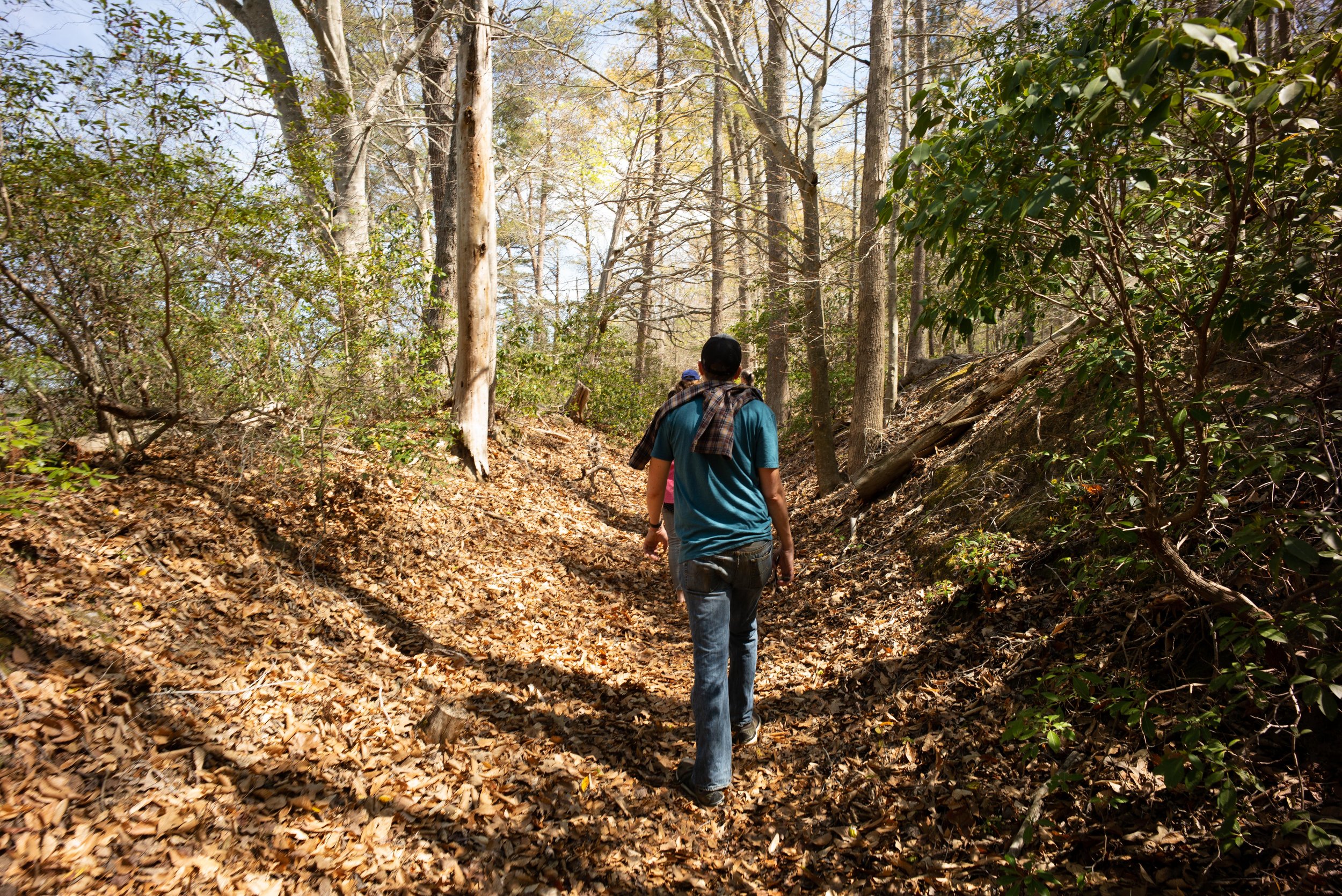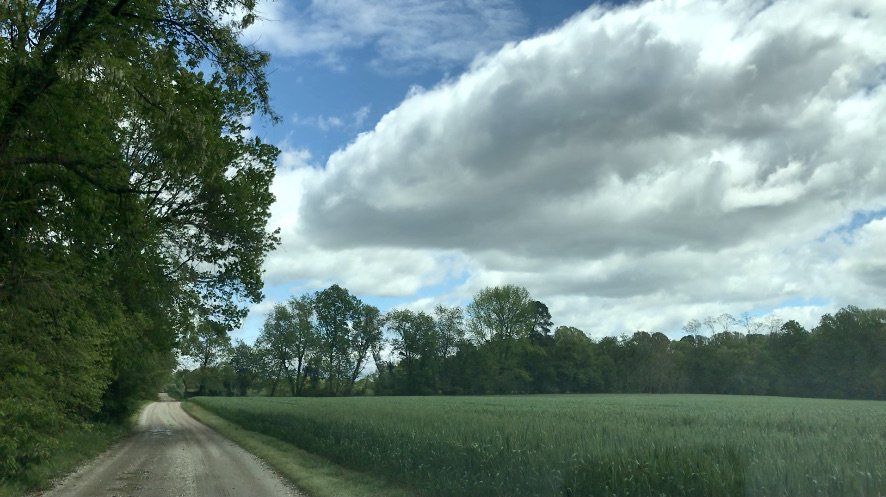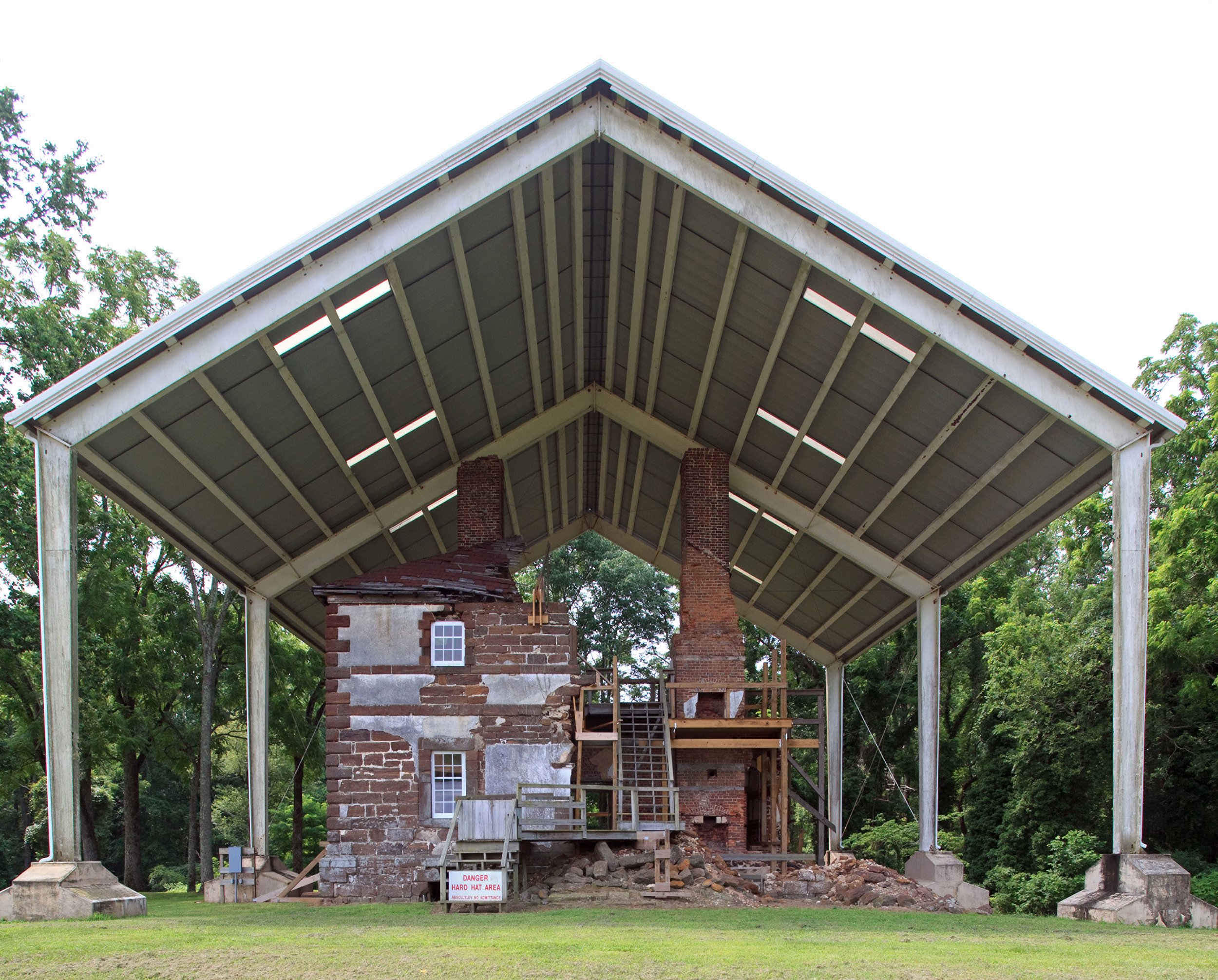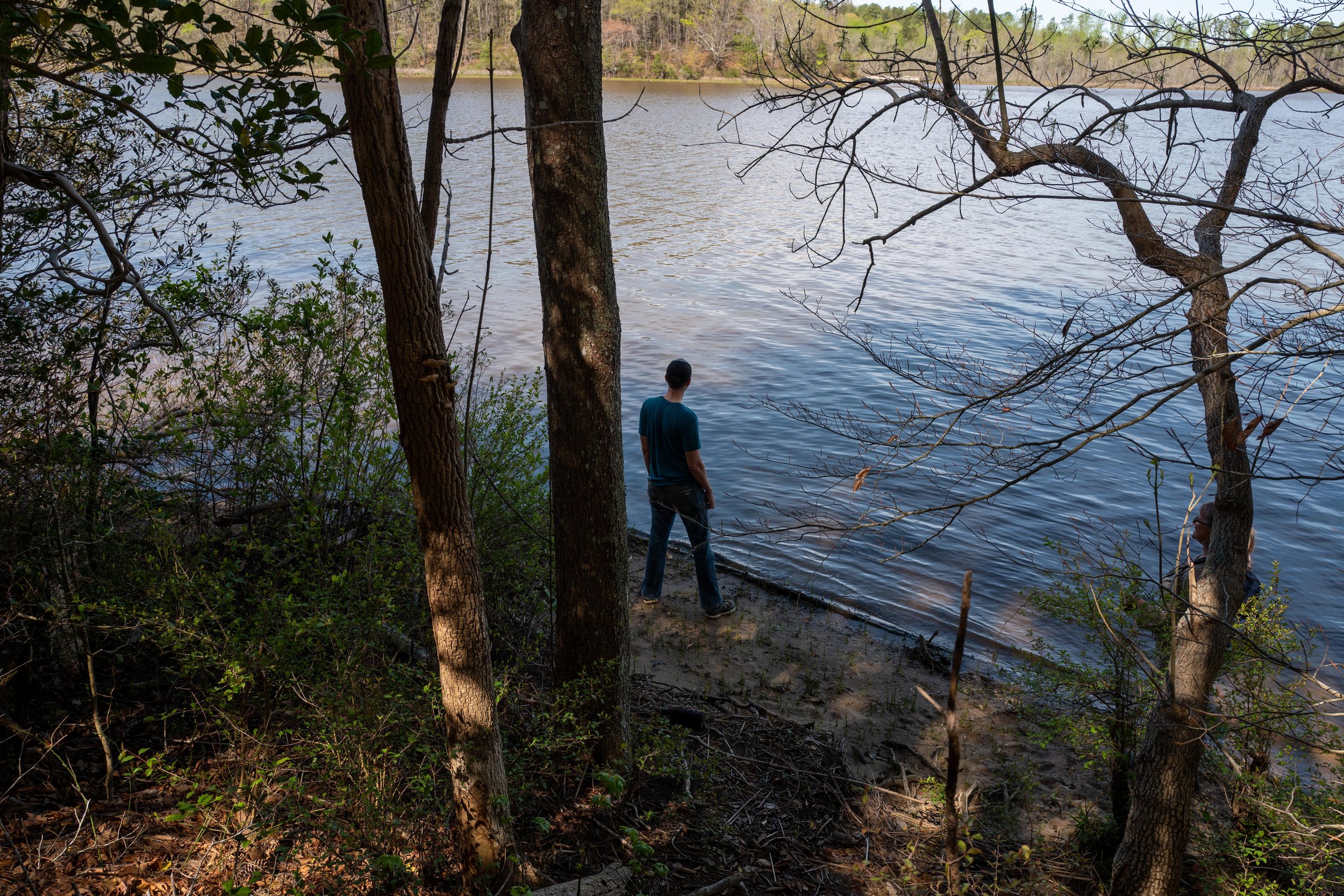A Passage to Menokin by Sam McKelvey
Our team asked me to write a social media post about the guided tour experience at Menokin. It got me thinking about my first time driving up Menokin’s gravel road, not as Executive Director, but as a guest seeing Menokin for the first time.
The singular emotional experience that followed sold me on the Menokin forever, and inspired me to leave the only organization I had ever worked for full time, Henrico County Historic Preservation and Museum Services.
Menokin felt different from other historical sites. It has the ability to engage and motivate persons to become more knowledgeable and empathetic citizens and neighbors.
Road arriving into Menokin
After turning down the road lined with corn and wheat fields, I approached a disintegrating ruin perched on the edge of a plateau dropping into the forests beyond.
The original home, though built by human hands, looked part of its environment. Sandstone blocks carved from the quarries 100 yards nearby; the timbers cut from the oak trees that grew here for centuries; the grout made from the sand and oyster shells of the river seen from the bluff above. The house was built from something old into something new, just like the country for which the occupant would help create.
Menokin Ruin
The ruin looked mournful - standing in front of it made me wonder about the the continuation of stories in the crumbling mortar – how the house collapsed, and what were the plans for rebuilding.
It made for a deeper illustration of the history in which the home was built. A country built on enslaved labor, a system in which this plantation thrived. Yet it couldn’t sustain itself- fittingly, and literally, falling back into the environment from which it was built.
The house is now being rebuilt with the innovative Glass House Project, speaking volumes about its history, and yet still showing the scars of its past akin to our own country’s ever-evolving narrative.
Alice French inside the Ruin
Alice French, my future colleague, Director of Programming and Education at Menokin, and an incredible steward of our guided tour, took me inside the ruin, showing me the stones that bore the markings of the builders of the past that were laid bare in the elements.
The hand wrought nails littered the paths throughout the house. I was used to seeing these artifacts behind cases with manufactured labels. Contrastingly, these artifacts at Menokin are found in their natural context for my own interpretation.
I explored Menokin’s 500 acres of trails - a journey from Indigenous settlement, plantation culture, reconstruction and modern industrial agriculture.
Gravel road to Tenant House, Tobacco Rolling Roads, and Cat Point Creek
These stories overlapped to give a clear picture of Menokin as a place that was meant to be explored and protected. I came across the historic rolling roads that once physically supported the enslaved laborers rolling hogsheads of tobacco down to the river. This terrain made very clear and sobering of the inhumane hardships in which these men, women and children were forced into.
I came soon to a reconstruction era Tenant House - or what was left of it. Its chimney peaking around through the woods made me feel I had found this secluded historic site on my own. The building, built by African American tenant farmers, marked an era of Reconstruction at Menokin where the hopes of the end of the Civil War began promising, and then ended in the controlled labor of millions of African Americans. Though this era was not necessarily triumphant, these families survived and thrived in their own way- building a family, a life, and a legacy lived by modern descendants of Menokin today.
Sam at Cat Point Creek
Lastly, I came to Cat Point Creek that flows along Menokin’s borders. I had expected a waterway that I could cross, and what I found was a mighty river - scenic and beautiful. It once was a highway system for the Rappahannock people for which Menokin’s name came from. The Rappahannock Tribe today remains an important culture in the Northern Neck, still just as much part of the land and story as those that followed.
Since coming to Menokin - it is this first experience that still inspires and guides me.
Menokin Remembrance Structure
How to tease out this experience, the story, the very personal and inspirational story that still sings from the trees and landscape today. The newly built Remembrance Structure, marking a site of a cluster of slave cabins, the exhibition of the woodwork that allows for deeper inspection and experience, the newly built trails and river experiences, our brickyards. All of these allow for a deeply enriching experience that still inspires.
I hope you decide to take a journey with us by taking a guided tour with our lauded stewards for whom over the years I am in awe of the breadth and depth of their knowledge and sense of place.
I give these tours myself now as well, and to see the same “lightbulbs” go off in visitor’s eyes each time keeps me also going deeper each day into this ever-unfolding story which is Menokin.
Sam McKelvey is the Executive Director at Menokin since arriving in 2016. He pretty much makes things tick around here. Murphy, his golden lab, would agree.












